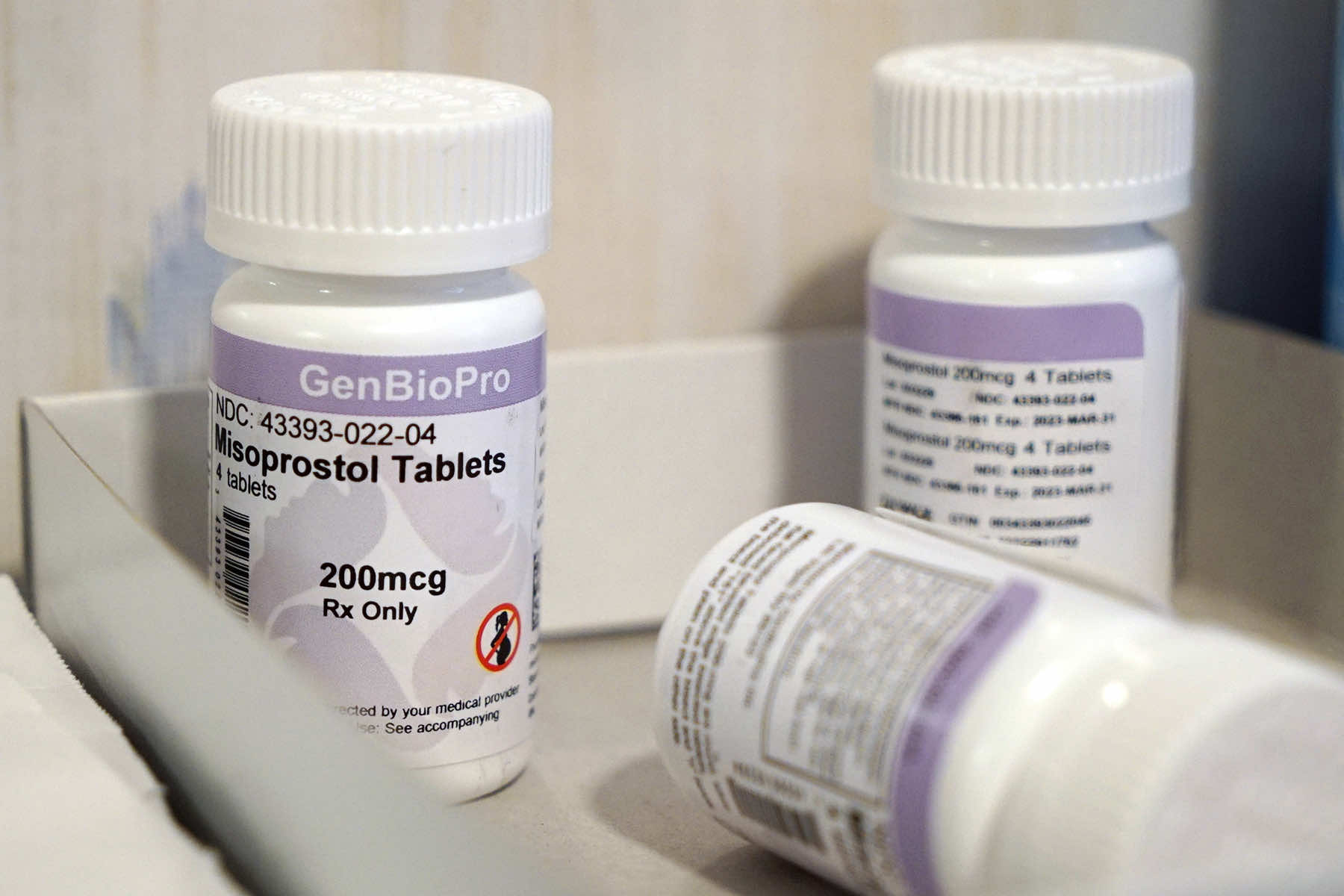
Medication abortions in the United States usually involve two different drugs. In the latest effort to limit abortion access, opponents of the procedure are seeking to ban one of those medications.
If they succeed, only one of the pills would be available, but women would still be able to get abortions. Here is a look at medications, efforts to curtail them and how clinics are responding.
THE DRUGS
The Food and Drug Administration regimen for medication abortions involves two drugs, mifepristone and misoprostol. The drugs can be taken at home and are used in just over half of U.S. abortions.
Mifepristone dilates the cervix and blocks the action of the hormone progesterone, which enables a pregnancy to continue. Misoprostol causes contractions that empty the uterus. Typically, mifepristone is taken by mouth first, followed by misoprostol a day or two later.
Studies show medication abortions are safe and effective, though with a slightly lower success rate than ones done by procedure in a clinic.
Mifepristone was developed in France in the 1980s as an abortion drug to be used with misoprostol. The FDA approved it in 2000. It’s indicated for use during the first trimester. It’s also approved in the U.S. to treat Cushing’s syndrome, a hormonal disorder.
Misoprostol, which is made by several companies, is approved for treating gastric ulcers. It is sometimes used in miscarriages to help expel tissue, in addition to its use in abortions.
In countries where mifepristone is banned for abortions, misoprostol alone is often used instead. Some U.S. clinics and telehealth providers also offer misoprostol-only abortions.
In these instances, one four-tablet dose of misoprostol is typically recommended for very early abortions. Additional doses taken four hours apart are recommended for later abortions.
Medication abortions are generally less expensive than procedures. At Carafem, a reproductive health group with clinics in four states and telehealth services in 16 states, medication abortions with both drugs cost $249 or $175 with misoprostol alone when obtained through a virtual visit. Abortion procedures at Carafem clinics cost about $450, a representative said.
RESTRICTIONS
Since the U.S. Supreme Court overturned Roe v. Wade in June, several states have tightened restrictions on abortions. Some limits were imposed even before then. Abortions are banned or unavailable in 14 states and 14 others restrict access to medication abortion, according to the Guttmacher Institute, a research group that supports abortion rights.
In November, an anti-abortion group filed a federal lawsuit in Texas seeking to ban mifepristone, claiming the FDA approved the drug 23 years ago without adequate evidence of safety. If a federal judge appointed by former President Donald Trump sides with abortion opponents, access to mifepristone could be halted nationwide.
REACTIONS
Clinics and telehealth providers already are preparing for a potential mifepristone ban by ordering more misoprostol supplies, so they can offer medication abortions with just that one drug. They’re also expecting a potential increase in demand for in-clinic procedures and are making sure they have enough staff members to handle the demand.
“Our manufacturers reassure us that there is plenty of misoprostol. They’re aware of this potential dramatic increase in need,” said Dr. Katie McHugh, an OB-GYN and abortion provider who works in Indiana, Ohio and Maryland.
Clinics are also preparing for changes in how they counsel patients, who will need to be told that misoprostol-only abortions are slightly less effective and sometimes more painful than abortions done with both drugs.
Abortions using both drugs “can be as effective as 98% or more,” while misoprostol-only abortions are up to about 95% effective, said Melissa Grant, chief operating officer of Carafem. The reproductive health group already offers abortions with both drugs or misoprostol alone.
“Hopefully we won’t have supply issues,” Grant said. “What worries me is potential interference with this drug, too.”
THE EXPERIENCE
Emma Hernandez, who works with the abortion rights group WeTestify, had an abortion eight years ago using both medications, and a second one more recently using just misoprostol. She was about eight weeks pregnant both times but said the experiences were pretty different.
The first time she was living in Indiana and obtained the pills from a clinic, where she took the first pill and went home to take misoprostol.
She took the four pills, holding them under her tongue for about half an hour, then went to sleep, only to be awakened by cramps stronger than she usually had with her period. The next day, the experience was complete and follow-up testing showed she was no longer pregnant.
Now 29 and living far from an abortion clinic, she recently learned she was pregnant again. She decided on an abortion and was told a clinic in an adjoining state was her best option. Hernandez says she was too sick with pregnancy nausea to make the trip, but was able to buy abortion pills closer to home.
She did not realize at first that the medication packet contained only misoprostol. She took three doses, three hours apart. The cramps were so intense she had trouble standing. There was little blood loss. And she eventually realized “it was not successful.”
Within two weeks, her nausea and pregnancy fatigue returned. She bought abortion pills again, this time including mifepristone, and her next effort was a success.
She knows her options could be more limited in the future.
“We’ve seen our clinics taken away. We’ve seen our mifepristone at risk of being taken away. What are the limits?” Hernandez asked. “It’s a tremendous loss.”













